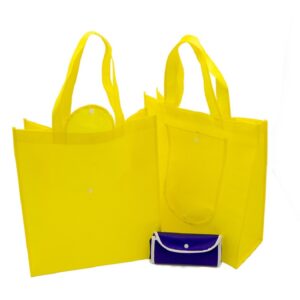Nonwoven fabrics have become essential materials for manufacturing protective masks and medical supplies. One of the most commonly used nonwoven fabrics for masks is spunbonded polypropylene. Spunbonded polypropylene nonwoven fabric is a popular choice for producing face masks and medical masks. It is made from spunbonding technology, producing strong, lightweight and economical fabric.
What is spunbonded polypropylene nonwoven fabric?
Spunbonded polypropylene nonwoven fabric is composed of 100% polypropylene polymer. Polypropylene is a highly versatile polymer that can provide a range of properties depending on the manufacturing process. The spunbonding process involves extruding polypropylene fibers, which are laid on a conveyor belt in a random pattern. The fibers are then bonded together through hot air or calendering to form a strong and flexible nonwoven fabric.

Spunbonded polypropylene nonwoven fabric for masks for several reasons:
- It is highly breathable due to the porous structure, allowing for airflow while still acting as a barrier. This is important for wearer comfort and reducing moisture buildup.
- It is lightweight yet durable. Spunbond polypropylene has good tensile strength for its weight.
- It is hydrophobic, meaning it repels moisture and water. This helps the mask maintain its shape and prevents pathogens/particles from passing through.
- It is inexpensive and cost effective to produce. Polypropylene resin is affordable, and the spunbonding process is highly efficient. This keeps costs low for large volume production.
- It is flexible and pliable. The fabric can drape well and conform to the face.
- It provides basic filtration and particle control. The fine fibers and random laydown pattern can achieve good filtration of large particles. Some weave modifications can enhance filtration performance for small particles as well.
For these reasons, spunbonded polypropylene nonwoven fabric continues to be the main choice for producing affordable and durable face masks and medical masks. When enhanced filtration is required, it can also be used as a base layer combined with meltblown filter media. Polypropylene non-woven fabric is a versatile, economical and effective material for mask production and medical supplies.